On one side of the coin, having too many retirement accounts can result in oversight and be detrimental to your overall retirement savings strategy. However, when you max out accounts, it pays to have other types of retirement accounts available; you can always consolidate accounts later. Having multiple accounts allows you to diversify your savings and tax allocations.
Get started with retirement planning in Libertyville, IL, with Prism Planning Partners.
This article will help you determine how to choose where to keep your savings.
What are the benefits of having multiple retirement accounts?
It can be beneficial to have a few retirement accounts, as they provide different benefits that you may need to take advantage of. For example, you may max out your contributions to a 401(k) plan and contribute to an HSA that same year.
When you spread your savings across multiple taxable and non-taxable accounts, you give yourself flexibility in retirement to combine many streams of income in a way that can allow you to maximize income and minimize taxes.
How can you determine how many retirement accounts you should have?
There is no limit to how many traditional individual retirement accounts (IRAs) you can have. But, if you establish multiple accounts, you cannot cross the contribution limits across all of your accounts per year. This requires strategy, in which the help of a financial advisor’s professional management of your accounts can help.
Many people start out with a 401(k) offered through their workplace. This is a great place to stow away your savings, especially if your employer offers a company match. If you max out your contributions, you can consider opening an IRA, to contribute even more money to your retirement savings each year.
These elective contributions are limited to $20,500 for 2022. Workers 50+ can make an extra $6,500 in catch-up contributions.
Let’s say you decide to leave that job; in that case, you can rollover your old 401(k) funds into that IRA so you can better manage your money in one location.
If your retirement accounts are tax-deferred that means your contributions to them reduce your taxable income for the year, but you will owe taxes on your withdrawals. If this is the case, you can add a Roth IRA if you want some savings to access tax-free in retirement.
 It’s important to look at the benefits of each retirement account that your existing accounts don’t, like better investment options or tax savings. If they don’t offer unique benefits, you can consolidate retirement accounts to more easily manage your funds.
It’s important to look at the benefits of each retirement account that your existing accounts don’t, like better investment options or tax savings. If they don’t offer unique benefits, you can consolidate retirement accounts to more easily manage your funds.
Evaluate your current retirement savings strategy to spot opportunities. Having the right accounts at your disposal can make reaching your financial goals feasible. Work with an investment advisory firm in Libertyville, IL, to help you plan with more thought.
What are some of the most common types of retirement accounts?
The most common types of retirement accounts are:
- 401(k): standard employee retirement plan offered by an employer
- Traditional IRA: anyone can opt-in for this retirement plan
- Roth IRA: a different type of tax advantage retirement plan
- SEP IRA: for self-employed individuals and small business owners
- Simple IRA and Simple 401(k): a simplified small business owners’ retirement plan
- Solo 401(k): For solo business owners with no employees
These retirement plans differ in tax advantages, contribution limits, withdrawal rules, and more.
- Tax advantages: many plans provide tax benefits when you input money, others when you take funds out
- Contribution limits: the max amount you can save annually
- Withdrawal rules: the time in which you can withdraw money from a plan without penalties, and applicable penalties for non-compliant withdrawals
How do you decide which retirement account to use for a specific purchase or goal?
Which retirement accounts you use should depend on your investing goals, life stage, and your portfolio risk. Since your funds are less liquid in retirement accounts early on, it will help to plan on your need or ability to access your funds.
During retirement, taxable investment accounts should be used first, followed by tax-free investments, and tax-deferred accounts. At age 72, you must take out your required minimum distributions (RMDs) from every investment account except your Roth IRAs.
If you need to discuss taking out money from your 401(k) early, there may be penalties. So ask your financial advisor in Libertyville, IL, what to do.
Read: How Much Should I Save For Retirement?
What are the tax implications of having multiple retirement accounts?
In order to plan tax-efficiently for retirement, it will help to:
- Understand why it matters where you keep your money
- Know which assets to put in tax-deferred accounts
- Tap taxable accounts first
- Tap your Roth IRA last
The order you tap into different accounts has tax implications, just like what type of account is holding your investments.
For example, a Roth IRA provides a tax-free status, putting it in a separate lane from your other accounts. Since Roth IRAs are funded with after-tax dollars, assets can be withdrawn tax-free. In order to take full advantage of the tax-free status, place high-growth investments in a Roth and let that be the last place to reach for retirement income.
If you are thinking about leaving an inheritance, a Roth is the most valuable asset you can give your heirs.
Should you consolidate your retirement accounts into one account?
Simplifying the management of your savings accounts should be the focus as you enter your golden years, and a Libertyville, IL financial advisor can help. In general, you will pay more fees with the more accounts you have. Plus, when you sell or buy an investment, you may be charged a transaction fee. When you consolidate accounts, you can make less sales and purchases over time, resulting in lower transaction fees.
The takeaways:
- Having just one retirement account can restrict your savings ability.
- Too many retirement accounts in your portfolio can make your savings hard to manage.
- Choose retirement accounts strategically based on your long-term goals and financial situation.
- Asset allocation is vital to ensure your investment eggs aren’t all in one basket, especially in retirement.
Before we can take any action with your personal finances, we take the time to get to know you and your family. Call Prism Planning Partners to plan a brighter retirement!



